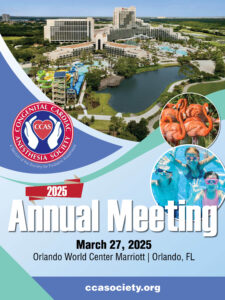Inquiring Minds Mending Tiny Hearts The CCAS Research Committee is proud to launch our monthly Podcast “Inquiring Minds Mending Tiny Hearts”. Over the course of this podcast, the research … [Read More...]









WELCOME
CCAS is a society organized within the Society for Pediatric Anesthesia. The CCAS concept originated with cardiac anesthesia directors and other key leaders at major congenital heart disease programs, who believed there was a need for a new society because of rapid advancement of highly specialized knowledge in the field, and a great increase in the numbers of patients, including adults with congenital heart disease.
Question of the Week
A 1-week-old girl with severe pulmonary stenosis, intact ventricular septum, and moderate tricuspid valve regurgitation is status post balloon pulmonary valvuloplasty. Two hours later, the heart rate was 188, with an arterial blood pressure of 46/19 and oxygen saturation of 88%. A transthoracic echocardiogram demonstrates a large patent ductus arteriosus with left-to-right shunting, along with severe pulmonary and tricuspid regurgitation. Which of the following management options is MOST likely to improve the patient’s hemodynamics?
A. Patent ductus arteriosus ligation
B. Inhaled nitric oxide
C. Milrinone infusion
